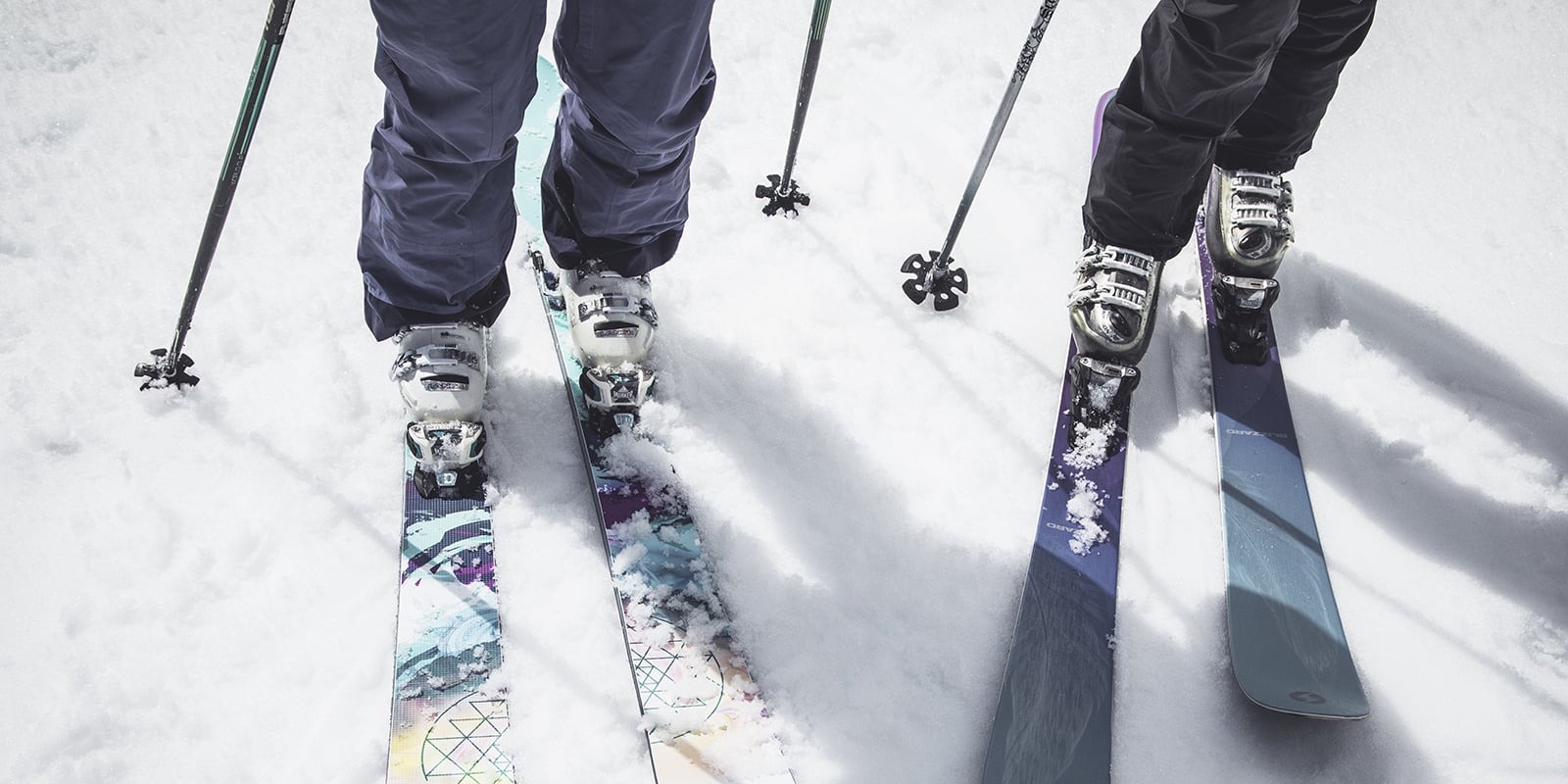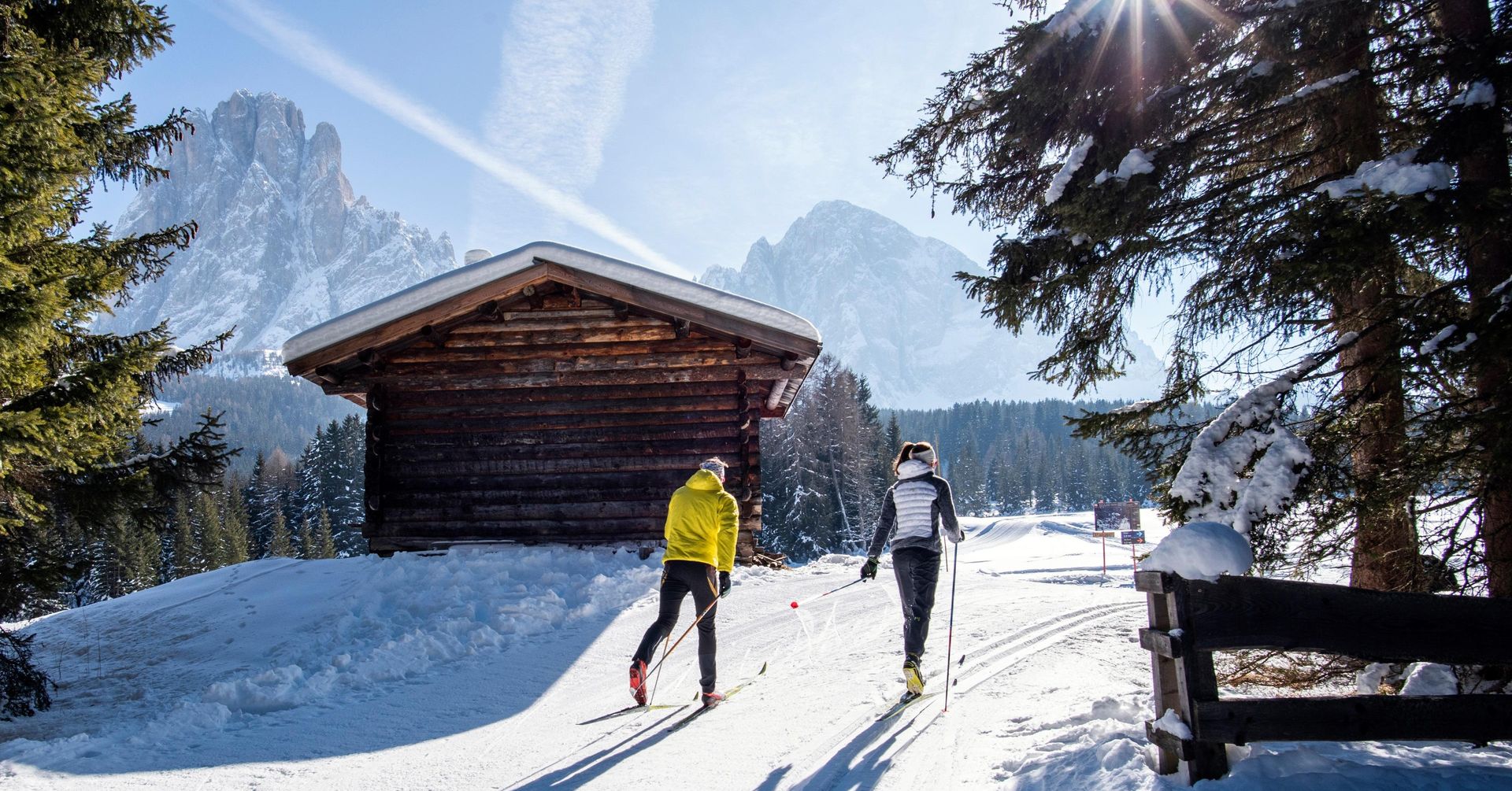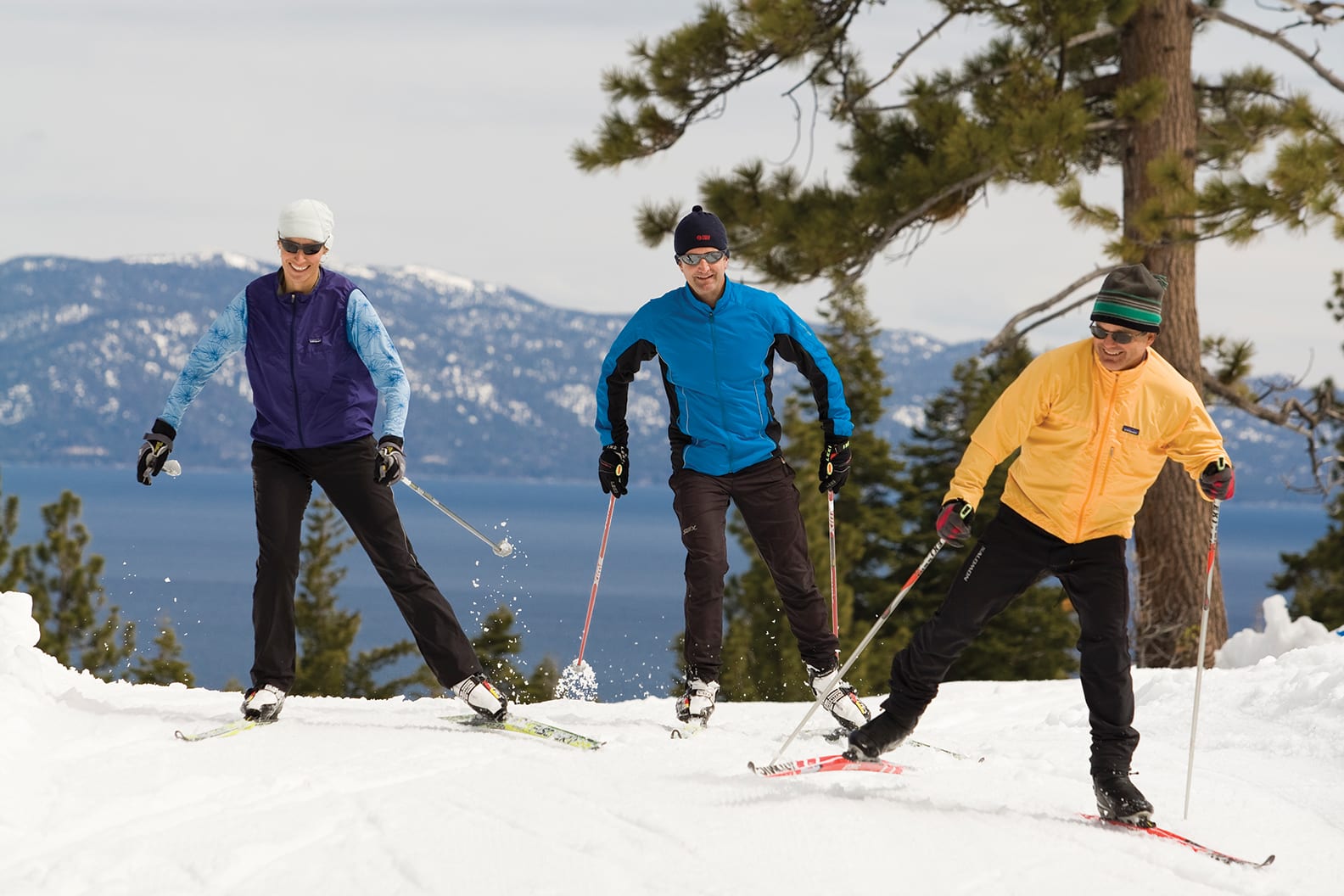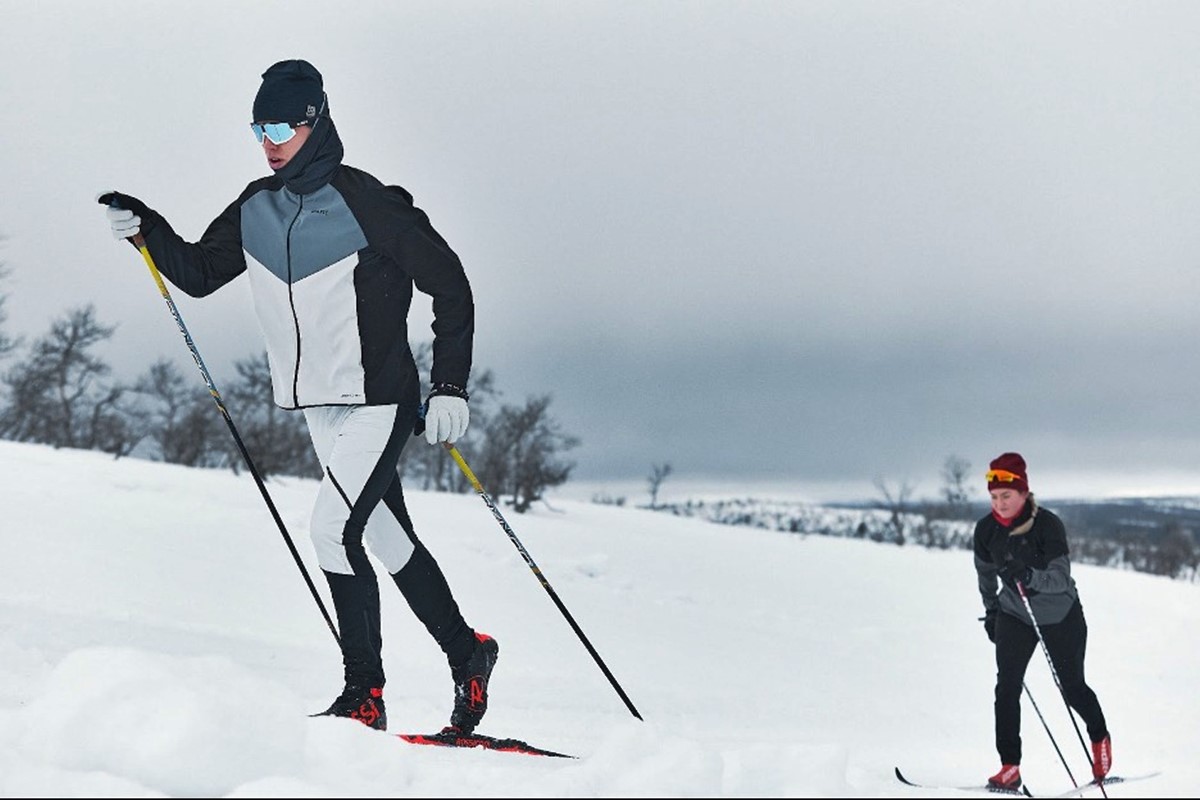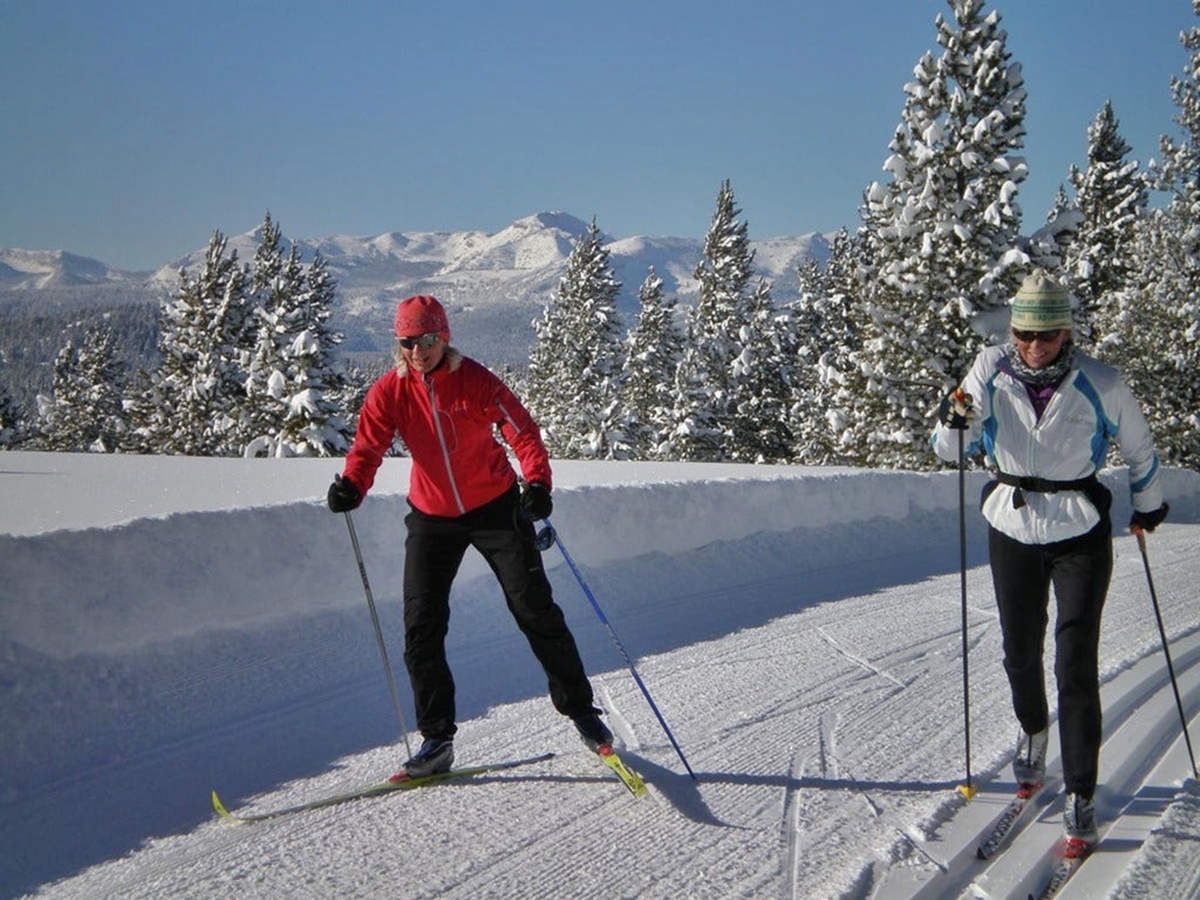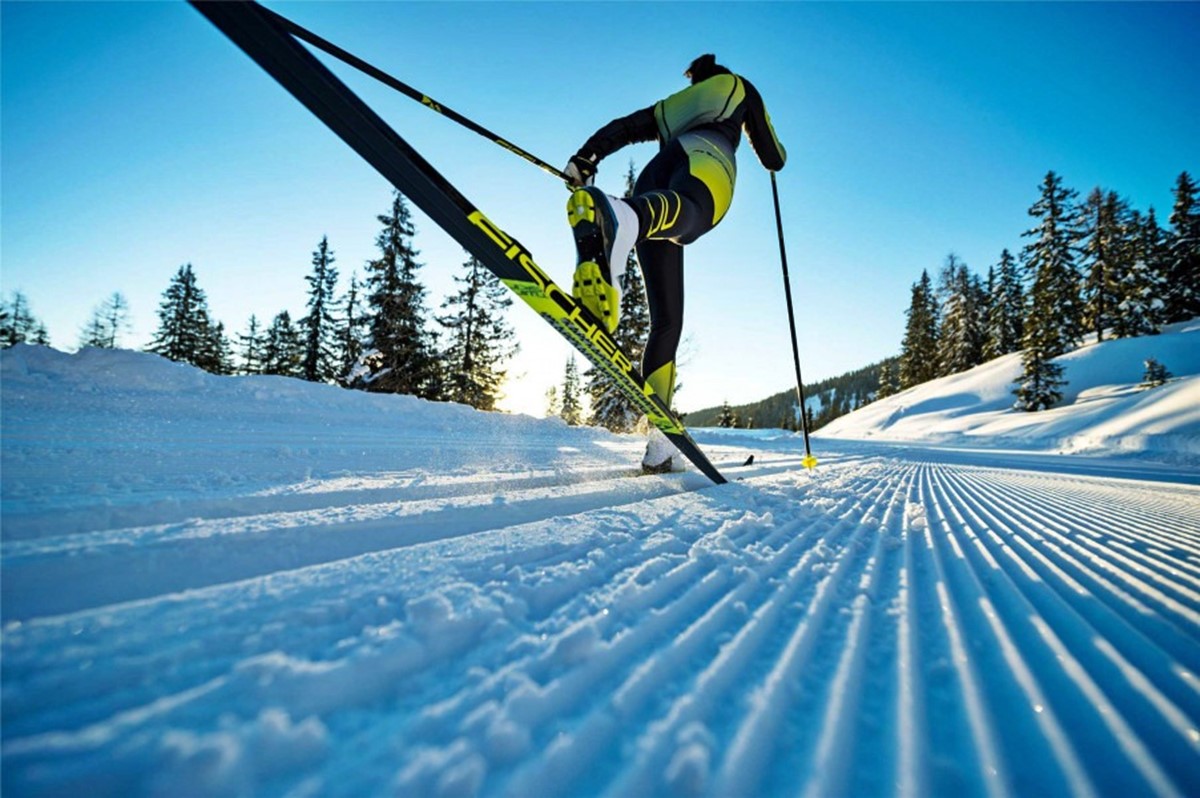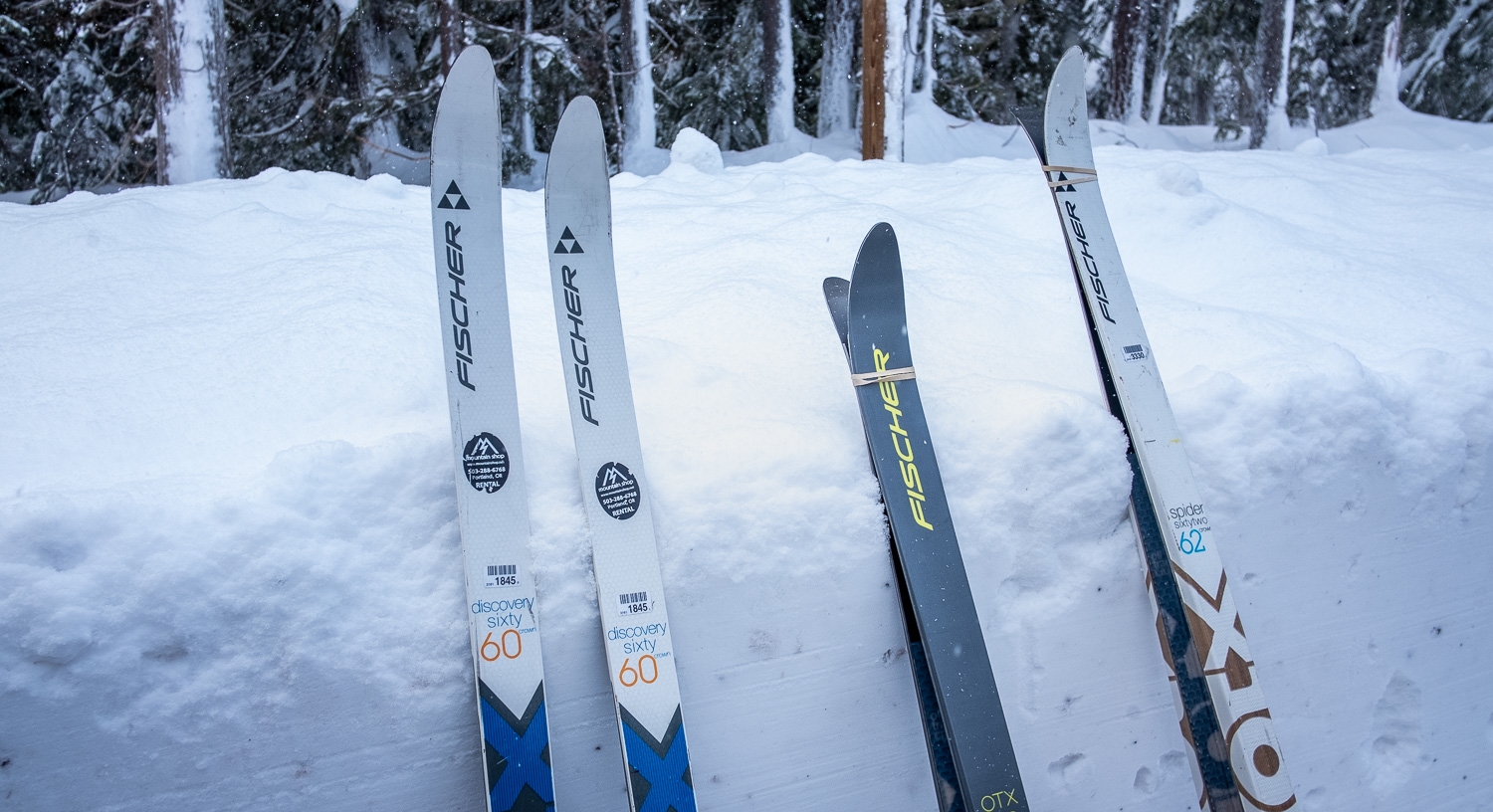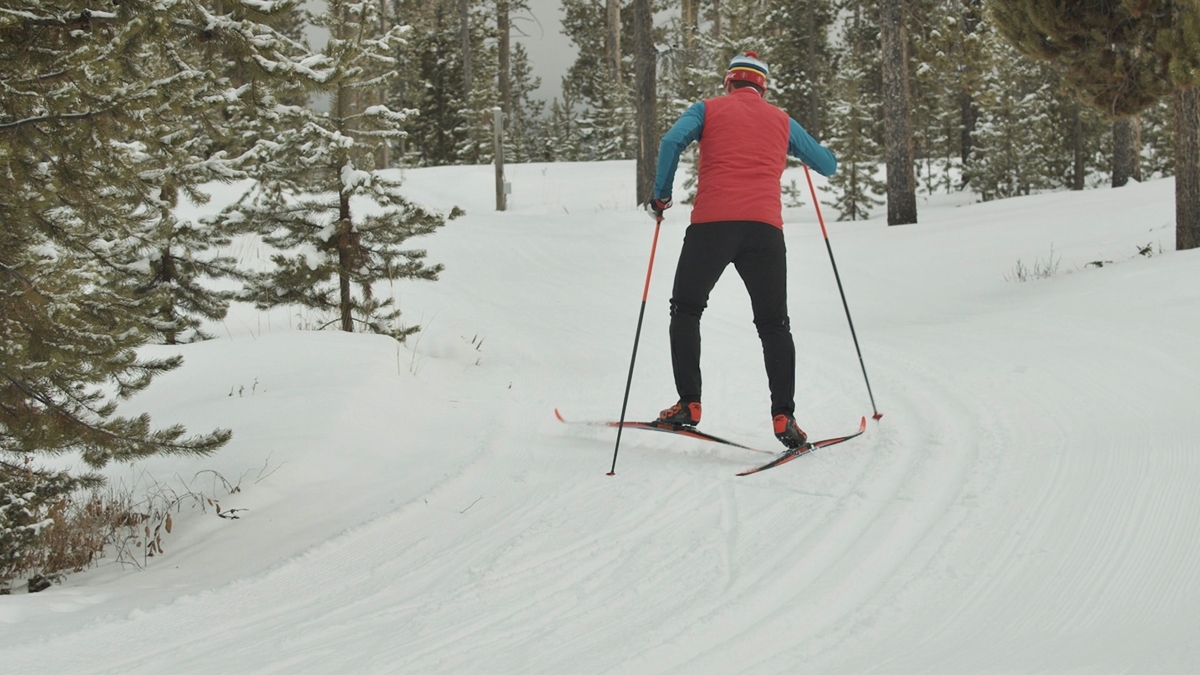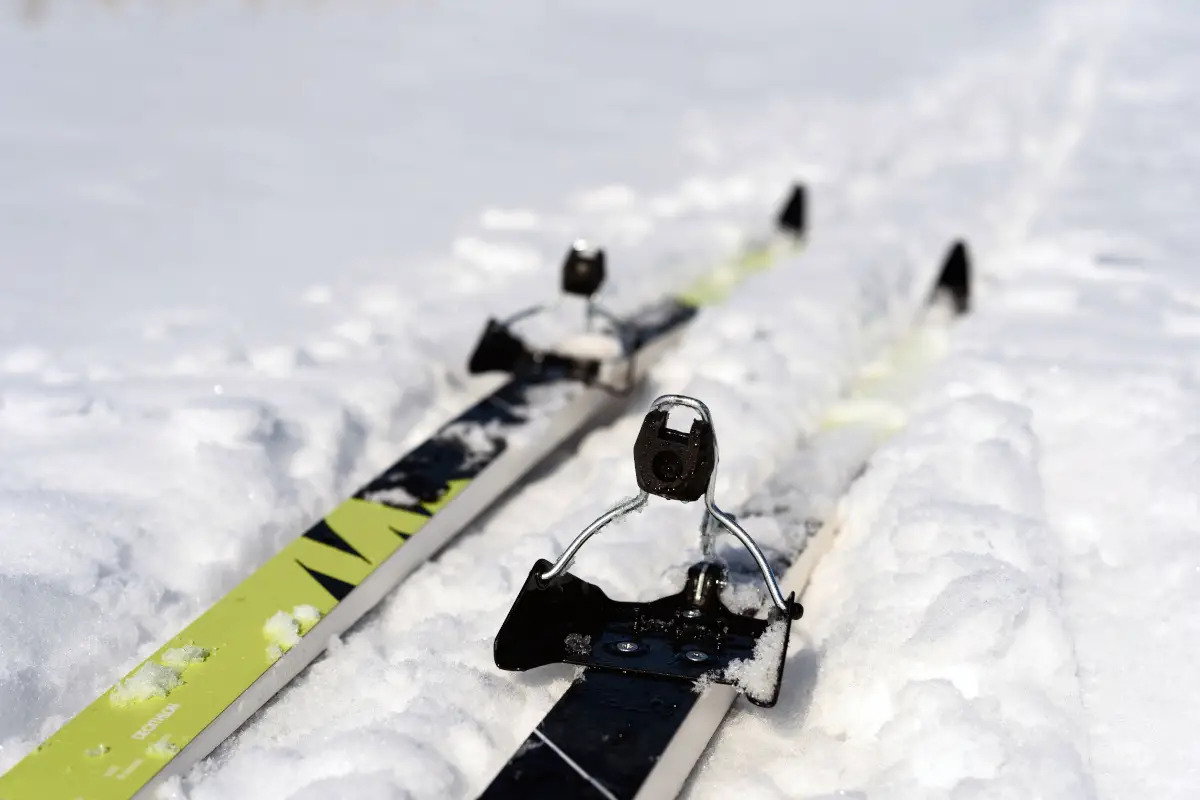Home>Misc>Featured>How To Get Started In Cross Country Skiing
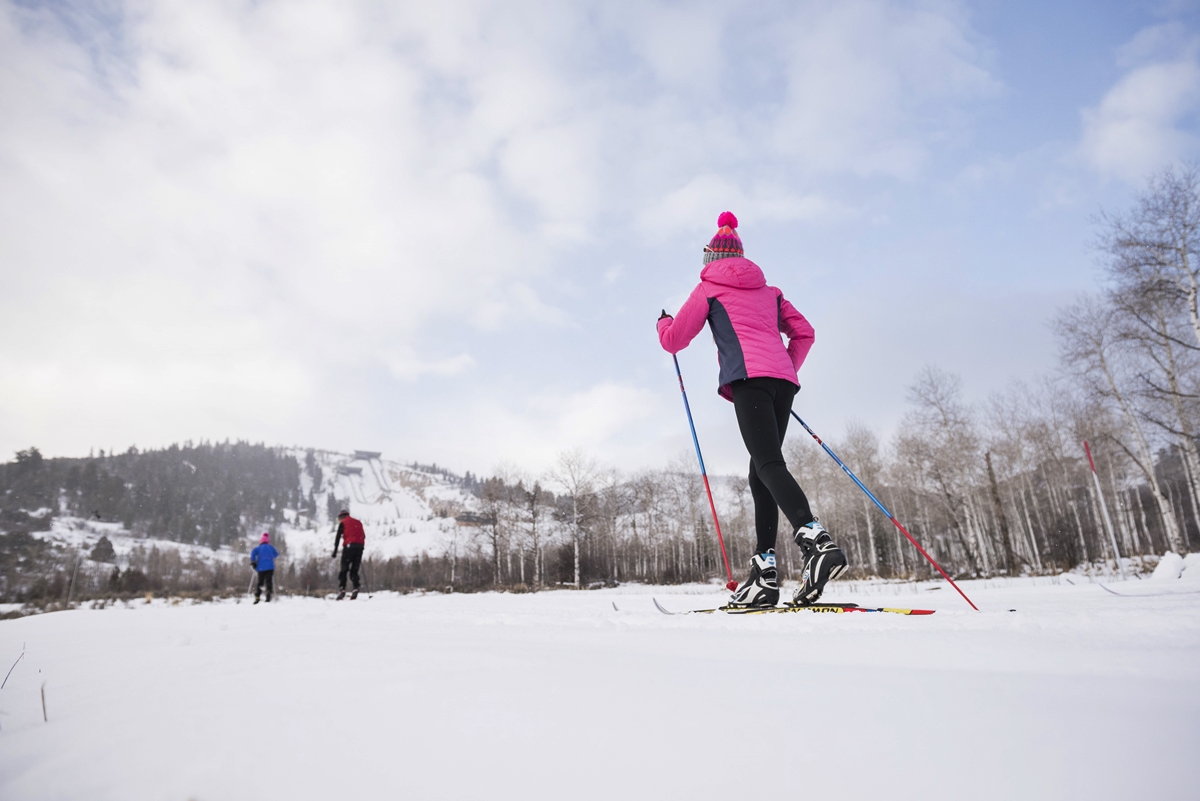

Featured
How To Get Started In Cross Country Skiing
Modified: August 21, 2023
Discover the featured guide on how to get started in cross country skiing. Learn the essential techniques and equipment needed to enjoy this exhilarating winter sport.
Introduction
Welcome to the exciting world of cross country skiing! If you’re looking for a fun and exhilarating way to stay fit and explore the great outdoors during the winter months, then you’ve come to the right place. Cross country skiing, also known as Nordic skiing, is a popular winter sport that involves gliding on snow-covered terrain using skis and poles.
Unlike downhill skiing, which focuses on speed and adrenaline, cross country skiing is more about endurance and technique. It’s a fantastic full-body workout that engages your muscles, improves cardiovascular fitness, and allows you to immerse yourself in the beautiful winter landscapes. Whether you’re a beginner or an experienced skier, cross country skiing offers something for everyone.
In this guide, we will take you through everything you need to know to get started in cross country skiing. We’ll cover equipment selection, finding the perfect location, dressing for the weather, basic skiing techniques, safety precautions, and even tips for maintaining your skis. So grab a cup of hot chocolate, put on your cozy socks, and let’s dive into the wonderful world of cross country skiing!
Choosing the Right Equipment
Before you hit the snowy trails, it’s crucial to have the right equipment that suits your skill level and chosen skiing style. Here are the key components you need to consider when choosing your cross country skiing gear:
1. Skis:
The most important piece of equipment is, of course, the skis. Cross country skis are longer, narrower, and lighter than downhill skis. There are different types of skis available, including classic and skate skis. Classic skis are used for traditional diagonal striding, while skate skis are designed for a skating motion.
When selecting skis, take into account your weight, skiing ability, and the type of terrain you’ll be skiing on. It’s recommended to consult with a knowledgeable salesperson or ski instructor to find the skis that best suit your needs.
2. Ski Bindings:
Bindings are the fastenings that attach your boots to the skis. They must be compatible with your ski boots and provide a secure fit. There are various binding systems, including NNN, SNS, and NIS, so ensure that you select the appropriate bindings for your chosen boots.
3. Ski Poles:
Ski poles help with balance, propulsion, and steering. Choose poles that are the correct length to accommodate your height and skiing technique. They should be long enough for good leverage and to allow comfortable arm movement while skiing.
4. Boots:
Cross country ski boots provide support, warmth, and control. They should fit snugly but still be comfortable. Boots come in different types, such as classic, skate, or combi boots, and they need to match your chosen skiing style.
5. Clothing and Accessories:
Dressing appropriately for cross country skiing is vital to ensure comfort and safety on the trails. Layer your clothing to regulate body temperature and choose moisture-wicking, breathable materials. Don’t forget to wear a hat, gloves, and sunglasses or goggles to protect yourself from the cold and sun.
Remember, investing in high-quality equipment that matches your skiing goals and abilities will enhance your overall experience on the slopes. It’s also essential to regularly inspect your gear for any signs of wear and tear and replace or repair equipment as necessary.
Finding the Perfect Location
When it comes to cross country skiing, the location you choose can greatly enhance your experience. Here are some key considerations to keep in mind when searching for the perfect skiing destination:
1. Cross Country Ski Trails:
Look for areas that have designated cross country ski trails or Nordic centers. These trails are specially groomed for cross country skiing and often offer a range of difficulty levels, suitable for beginners to advanced skiers. Check with local ski clubs or visitor centers for information on the best trails in your area.
2. Scenic Beauty:
One of the unique benefits of cross country skiing is the ability to immerse yourself in breathtaking winter landscapes. Look for locations that offer stunning scenery, such as snow-covered forests, mountain vistas, or frozen lakes. It’s an excellent opportunity to connect with nature while getting your skiing fix.
3. Accessibility:
Consider the proximity of the location to your home or accommodation. Choose a location that is easily accessible and doesn’t require a long and arduous journey. This will allow you to spend more time on the trails and less time on the road.
4. Amenities and Services:
Find out if the location has amenities such as parking, restrooms, and facilities for equipment rentals or lessons. Having these services available can make your skiing experience more convenient and enjoyable, especially if you’re a beginner or don’t have your own equipment.
5. Weather Conditions:
Consider the weather conditions of the area you plan to ski in. Look for areas that have consistent snowfall and maintain good snow conditions throughout the winter season. It’s always better to choose locations that have reliable snow coverage to ensure a smooth and enjoyable skiing experience.
6. Local Regulations:
Be aware of any specific rules and regulations governing cross country skiing in your chosen location. Some areas require ski passes or have designated ski seasons. Familiarize yourself with these guidelines to avoid any issues and to help preserve the natural environment.
Remember, every location has its own unique charms and challenges. Explore different trails and destinations to discover what suits your preferences and abilities. With the right location, you’ll have an unforgettable cross country skiing adventure.
Proper Dressing and Layering
When it comes to cross country skiing, dressing appropriately is key to staying comfortable and protected from the elements. The right clothing and layering technique can help regulate your body temperature and ensure an enjoyable skiing experience. Here are some tips for proper dressing and layering:
1. Base Layer:
Start with a moisture-wicking base layer that is snug and fits well. This layer should be made of a material such as merino wool or synthetic fibers that will keep you dry by wicking away sweat from your body.
2. Insulating Layer:
Add an insulating layer on top of your base layer. This layer should provide warmth and insulation. Fleece or thermal tops and bottoms are good options as they trap heat while still being breathable.
3. Outer Layer:
The outer layer should be windproof and waterproof to protect you from the elements. Look for a jacket and pants specifically designed for cross country skiing. These garments are typically lightweight and flexible, allowing for a full range of motion while keeping you dry and protected.
4. Accessories:
Don’t forget essential accessories such as a hat or beanie, neck gaiter or scarf, gloves or mittens, and warm socks. These items will help keep your extremities warm and protected.
5. Layering Technique:
Layering is essential to regulate your body temperature during skiing. Start with a thin base layer and add insulating layers as needed. Choose layers that you can easily remove or add depending on the weather conditions and your activity level.
6. Consider Ventilation:
While you want to stay warm, it’s important to prevent overheating and excessive sweating. Look for clothing with ventilation options, such as zippered vents or breathable fabrics, to regulate your body temperature and avoid moisture build-up.
7. Don’t Forget Sun Protection:
Even in winter, the sun can be strong. Apply sunscreen to exposed skin to protect it from harmful UV rays. Wear sunglasses or goggles to shield your eyes from the sun’s glare and potential snow reflection.
Remember, everyone’s tolerance to cold and preferred level of activity differs. It’s essential to experiment with different clothing combinations and adjust your layers according to the weather conditions and your own comfort. With the right dressing and layering, you’ll be ready to enjoy cross country skiing in any winter climate.
Basic Cross Country Skiing Techniques
Learning the basic techniques of cross country skiing is essential to enjoy the sport and make the most of your time on the trails. Here are some fundamental techniques to get you started:
1. Diagonal Stride:
The diagonal stride is the classic technique used in cross country skiing. Start by pushing off with one ski while gliding forward on the other. As you glide, your arms and poles should alternate to provide rhythm and balance. Practice the proper weight transfer from one ski to the other to maintain a smooth and efficient stride.
2. Double Poling:
Double poling is used in both classic and skate skiing and involves planting both poles into the ground simultaneously, generating forward momentum. Keep your upper body stable and engage your core muscles for a powerful double pole technique.
3. Snowplow Turn:
The snowplow turn is a useful technique for controlling your speed and making turns. Vary the pressure on your skis to create a wedge, forming a “V” shape with your skis. This technique helps slow you down and allows for easier maneuvering on downhill sections or tighter turns.
4. Side Step:
The side step technique is helpful for navigating steep or challenging terrain. Lift one ski and step it sideways, followed by the other ski. This technique allows you to climb slopes with more ease or move across level terrain in a controlled manner.
5. Herringbone:
The herringbone technique is commonly used for ascending steep hills. Point your skis outwards in a “V” shape and apply pressure to the outer edges while keeping your weight centered. This technique provides traction and prevents your skis from slipping on uphill sections.
6. Skating Technique:
For those using skate skis, the skating technique is utilized. Push off to the side with the inside edge of one ski while gliding on the other ski. Use a alternating arm motion to generate power and maintain balance and rhythm.
Remember, these are just a few basic techniques to give you a foundation in cross country skiing. Practice regularly to refine your skills and consider taking lessons from a professional instructor to improve your technique and confidence on the trails. As you become more comfortable, you can explore more advanced techniques and enjoy the thrill of gliding through the snow with ease.
Essential Safety Precautions
While cross country skiing is a fantastic way to enjoy the winter outdoors, it’s crucial to prioritize safety to ensure a positive and injury-free experience. Here are some essential safety precautions to keep in mind:
1. Know Your Limits:
Be realistic about your skill level and physical abilities. Start with trails and terrain suitable for your experience and gradually progress to more challenging routes as you improve. Pushing yourself beyond your limits can lead to accidents and injuries.
2. Stay Hydrated and Fuel Up:
Always carry water and snacks with you to stay hydrated and maintain your energy levels. Cold weather can sometimes mask signs of dehydration, so it’s essential to drink water regularly throughout your skiing session.
3. Dress Appropriately:
Wearing the right clothing and layering is not only for comfort but also for safety. Ensure you are dressed appropriately for the weather conditions to avoid hypothermia or frostbite. Pay attention to changes in the weather and be prepared to adjust your clothing accordingly.
4. Use Proper Equipment:
Make sure your equipment is in good condition and properly maintained. Check your skis, bindings, poles, and boots before each outing. Loose bindings, damaged equipment, or poorly fitting boots can lead to accidents or injuries.
5. Follow Trail Etiquette:
When skiing on designated trails, be mindful of other skiers and follow the established trail etiquette. Yield to faster skiers, pass on the designated side, and follow any posted signs or instructions. This will help prevent collisions and maintain a safe and enjoyable environment for everyone.
6. Be Aware of Avalanche Risks:
If you plan to ski in mountainous regions, be aware of the potential for avalanches. Educate yourself on avalanche safety, and always check the current avalanche risk level before heading out. Consider taking an avalanche safety course to learn how to identify and mitigate these risks.
7. Carry Communication and Safety Equipment:
Carry a fully charged mobile phone with you in case of emergencies. It’s also a good idea to carry a whistle, a small first aid kit, and a trail map to help navigate and communicate your location if needed.
By observing these safety precautions, you’ll minimize the risk of accidents and ensure a safe and enjoyable cross country skiing experience. Remember, safety should always be a top priority when venturing into the winter wilderness.
Getting Started with Cross Country Skiing Lessons
If you’re new to cross country skiing or want to refine your skills, taking lessons from a certified instructor is a great way to get started. Here’s why you should consider signing up for cross country skiing lessons:
1. Proper Technique Instruction:
A qualified instructor will teach you the proper techniques and skiing fundamentals right from the beginning. They will demonstrate the correct body positions, weight distribution, and pole techniques to help you develop efficient and effective skiing skills.
2. Safety Guidance:
During lessons, instructors prioritize safety and will teach you essential safety practices such as how to fall properly, how to navigate difficult terrain, and how to retreat safely in case of emergencies. They will also educate you on avalanche awareness and equip you with the necessary knowledge to make informed decisions in the backcountry.
3. Equipment Recommendations:
Instructors can guide you in choosing the right equipment for your skill level and skiing style. They have firsthand knowledge of various types of skis, bindings, and boots, and can offer advice on what suits your needs and goals as a skier.
4. Progression and Skill Development:
Lessons provide a structured learning environment where you can progress at a comfortable pace. Instructors will introduce new skills and drills as you improve, helping you build a solid foundation and develop your skiing abilities. They can also provide personalized feedback and corrections to help you refine your technique.
5. Boost Confidence and Enjoyment:
Learning under the guidance of an instructor can boost your confidence and ensure you have a positive experience with cross country skiing. They will provide encouragement, support, and tips to help you overcome any challenges you may face. This will enhance your enjoyment of the sport and make your skiing adventures more rewarding.
6. Social Experience:
Joining a cross country skiing lesson provides an opportunity to meet other individuals who share your interest in the sport. You can make new friends, ski together, and even plan future outings. The social aspect adds an extra layer of enjoyment to your skiing experience.
Whether you’re a beginner or looking to enhance your skills, cross country skiing lessons are a valuable investment. They lay a solid foundation, help you avoid bad habits, and provide guidance for a safe and enjoyable skiing journey. So, put on your ski boots and sign up for a lesson today!
Building Endurance and Stamina
Endurance and stamina play a vital role in enhancing your performance and enjoyment in cross country skiing. As a full-body workout, cross country skiing requires cardiovascular fitness and muscular endurance. Here are some tips to help you build endurance and stamina for your skiing adventures:
1. Cardio Training:
Engage in aerobic exercises such as running, cycling, swimming, or brisk walking to improve your cardiovascular fitness. These activities will strengthen your heart and lungs, allowing you to sustain longer periods of skiing without getting fatigued.
2. Interval Training:
Incorporate interval training into your fitness routine to simulate the intensity fluctuations you’ll experience while skiing. Alternate between high-intensity bursts and slower recovery periods to challenge your body and improve your stamina.
3. Strength Training:
Include strength training exercises in your fitness regimen to build muscular endurance. Focus on exercises that target your lower body, such as squats, lunges, and step-ups, as well as your core and upper body to ensure overall strength and stability.
4. Ski-Specific Exercises:
Practice ski-specific exercises to target the muscle groups used in cross country skiing. These exercises can include lateral lunges, box jumps, and step-ups to mimic the movements involved in skiing and build specific muscle strength.
5. Long-Distance Skiing:
Gradually increase the duration and distance of your ski sessions to build endurance. Start with shorter and easier routes and gradually progress to longer and more challenging trails. Consistency is key, so aim to ski regularly to build up your stamina over time.
6. Cross-Training Activities:
Engage in other activities that complement cross country skiing, such as hiking, snowshoeing, or biking. These activities work different muscle groups, boosting your overall fitness and stamina, and providing a break from repetitive movements.
7. Proper Recovery:
Allow your body ample time to rest and recover between training sessions to prevent overexertion and injury. Listen to your body and prioritize rest days, stretching, and adequate sleep to aid in muscle recovery and rebuild your energy levels.
Remember, building endurance and stamina takes time and consistency. Gradually increase the intensity and duration of your workouts and monitor your progress. With dedication and persistence, you’ll notice improvements in your overall fitness and be able to enjoy longer and more challenging cross country skiing adventures.
Exploring Different Types of Cross Country Skiing
Cross country skiing offers a wide range of styles and techniques to explore. Each type of cross country skiing has its own unique characteristics and appeals to different interests and skill levels. Here, we’ll delve into some of the most popular types of cross country skiing:
1. Classic Cross Country Skiing:
Classic cross country skiing is the traditional style of skiing, characterized by the diagonal stride technique. It involves a forward gliding motion with a kick-and-glide movement, using parallel tracks on groomed trails. Classic skiing is suitable for all levels of skiers, offering a graceful and rhythmic experience through serene winter landscapes.
2. Skate Skiing:
Skate skiing, inspired by ice skating, is a dynamic and fast-paced style of skiing. Unlike classic skiing, skate skiing involves a lateral side-to-side motion, pushing off with the edges of the ski and using a skating motion with the poles. It requires more strength and balance, making it ideal for those seeking a more vigorous workout and a faster pace.
3. Telemark Skiing:
Telemark skiing combines elements of cross country and downhill skiing. It utilizes a specific type of ski binding that allows the heel to lift off the ski, enabling a deeper flex and more controlled turns. Telemark skiing offers a graceful and versatile technique, well-suited for exploring backcountry terrain and steep descents.
4. Backcountry Skiing:
Backcountry skiing takes you off the groomed trails and into the wilderness. It involves exploring untouched snowy terrain and navigating through forests, mountains, and open fields. Backcountry skiing requires specialized equipment, including wider and more durable skis, boots, and bindings to handle various snow conditions and rugged terrain. It offers an adventurous and immersive experience in nature.
5. Ski Touring:
Ski touring combines the freedom of backcountry skiing with the ability to explore vast distances. This type of skiing involves traveling long distances, often over several days, while carrying a backpack with camping gear. Ski touring enthusiasts enjoy the challenge of both uphill and downhill skiing, experiencing the solitude and beauty of remote winter landscapes.
6. Ski Orienteering:
Ski orienteering combines cross country skiing with map reading and navigation skills. Participants must navigate through a series of checkpoints using a map and compass, competing for the fastest time. Ski orienteering is a mentally and physically demanding sport that adds an element of strategy and problem-solving to cross country skiing.
Exploring different types of cross country skiing allows you to discover new challenges, expand your skills, and embrace a variety of winter landscapes. Whether you prefer the graceful rhythm of classic skiing, the dynamic stride of skate skiing, or the adventurous spirit of backcountry exploration, there’s a style of cross country skiing to suit every preference and passion.
Tips for Maintaining Your Cross Country Skis
Proper maintenance of your cross country skis is essential to ensure optimal performance and longevity. Here are some valuable tips for maintaining and taking care of your skis:
1. Clean Your Skis:
After each skiing session, remove any dirt, debris, or excess snow from your skis. Use a ski-specific brush or cloth to clean both the ski bases and the edges. This will prevent buildup that can affect your skiing performance.
2. Regular Waxing:
Waxing is crucial to maintain the glide and speed of your skis. Depending on the type of skis you have and the conditions you ski in, you may need to apply glide wax, kick wax, or a combination of both. Regular waxing helps to reduce friction and improve the overall performance of your skis.
3. Edge Maintenance:
Pay attention to the edges of your skis, which provide stability and control. Check for any nicks or dents and file them with a ski-specific edge tool. This will ensure that your skis have a sharp and consistent edge, helping you grip the snow and make smooth turns.
4. Store Skis Properly:
When you’re not using your skis, store them in a cool and dry place away from direct sunlight. Make sure they are not under any pressure or weight, as this can cause them to warp or lose their shape. Consider using ski storage racks or bags to protect them from damage.
5. Check and Replace Bindings:
Regularly inspect your ski bindings for any signs of wear or damage. Check that the binding screws are secure and tighten them if necessary. If you’re unsure about the condition of your bindings, consult a professional ski technician to ensure they are functioning properly.
6. Base Repair:
If you notice any significant scratches or gouges on the base of your skis, it’s important to repair them to maintain the integrity of the ski base. Use a base repair kit or contact a ski technician for professional repair when needed.
7. Get Professional Servicing:
Consider getting your skis professionally serviced at least once a season. Skilled technicians can inspect your skis, perform a thorough tuning, and make any necessary repairs or adjustments to keep your skis in top condition.
By following these maintenance tips, you’ll ensure that your cross country skis continue to perform at their best. Regular care and attention will not only prolong the lifespan of your skis but also enhance your skiing experience, allowing you to glide smoothly and confidently on the snowy trails.
Conclusion
Cross country skiing is a thrilling and rewarding winter sport that offers a unique combination of fitness, adventure, and connection with nature. Whether you’re a beginner or an experienced skier, there’s always something new to explore and improve upon in cross country skiing. By following the tips and techniques outlined in this guide, you can start your cross country skiing journey with confidence and make the most of your time on the snow-covered trails.
Choosing the right equipment, finding the perfect location, dressing appropriately, and learning the basic techniques are all crucial steps in getting started. Taking lessons from certified instructors can help you refine your skills, build endurance and stamina, and ensure safety while skiing. Exploring different types of cross country skiing and maintaining your skis properly will elevate your experience and allow you to fully enjoy the sport.
Whether you prefer the classic style of skiing, the dynamic movements of skate skiing, or the adventure of backcountry exploration, cross country skiing offers something for everyone. It’s a sport that can be practiced by individuals of all ages and fitness levels, and it provides an excellent full-body workout while immersing you in the beauty of nature.
So, grab your skis, embrace the crisp winter air, and hit the trails with enthusiasm. Discover the joy of gliding through the snow, the satisfaction of building your skills, and the sense of accomplishment as you conquer new challenges. Cross country skiing is not just a sport—it’s an experience that will leave you with lasting memories and a deep connection to the winter wonderland. Happy skiing!
